 | Blog Tips to Help You Make Money Blogging - ProBlogger http://www.problogger.net рекомендовать друзьям >> |
- The Blogger's Essential WordPress Guide: 13 Top Tutorials
Over the last couple of months, we’ve taken a close look at WordPress here on ProBlogger.
I know that many readers do use WordPress—either the free or paid version—and it’s the content management system of choice for many high-profile sites. I’ve been using it for years, and I’d have to say that it’s served me really well over that time.
The articles we’ve published have covered many of the essential aspects of blogging using WordPress, from choosing the service that’ll suit you and weighing up different themes, to securing, posting to, and making money from your WordPress blog.
In case you’ve missed any of these great posts, I thought I’d compile them all here for easy reference.
- Getting started
- WordPress.com or WordPress.org? Which one’s right for you?
- What you need to know before you start a WordPress blog
Security - Set safe, secure user roles on your WordPress blog
- Secure your WordPress blog without touching any code
SEO - Essential SEO settings for every new WordPress blog
Themes - How to select your first WordPress theme
- Install your first WordPress theme
Plugins - Install your first WordPress plugin
- 19 Essential WordPress plugins for your blog
- 5 WordPress plugins to help you make money from your blog
Posting - Use email to post to your WordPress blog
Making money - 9 Ways to make money from WordPress … without having a blog
- Premise 2.0 released: complete digital sales and lead generation engine for WordPress
Thanks to all the contributors who put in the work to help us get our heads around these finer points of WordPress, including Matt Hooper, Karol K of ThemeFuse, Anurag Bansal of Techacker, Eric Siu of Evergreen Search, Louise of MoneySupermarket.com, and Sean Platt of outstandingSETUP.
Later this week, we’ll be taking a look at some of the best alternatives to WordPress—so if you’re interested in finding out more about blog platforms, keep an eye on the site!
Do you have a favourite WordPress tutorial or resource that you can add to this list? Share it with us in the comments.
Originally at: Blog Tips at ProBlogger

The Blogger’s Essential WordPress Guide: 13 Top Tutorials

Переслать - 8 Killer Tactics to Grow Your Blog with LinkedIn
This guest post is by Josh Turner of LinkedSelling.
Is your blog a business, or do you hope that it someday will be?
If you answered yes, then you should consider refocusing some of your social media activities toward the world’s largest social network for business.
That’s right, LinkedIn isn’t just for big companies or finding a job. There are a ton of practical tactics and strategies that you can engage in to build your blog on LinkedIn. Here are eight of my absolute favorites.
1. Join groups where other bloggers hang out
It’s surprising how few bloggers take advantage of the free communities available on LinkedIn. While paid membership sites flourish, completely free membership groups exist within LinkedIn that offer many of the same benefits.
Consider getting involved with groups such as Professional Bloggers or Small Biz Forum.
These types of groups are full of people just like you: they’re eager to build relationships with other bloggers, looking for guest posting opportunities, and engaged in daily conversations about being a small business owner.
2. Use the LinkedIn Share button to promote content
ou likely have Twitter, Facebook, and maybe a couple other social sharing buttons on your blog. If you don’t have a LinkedIn share button, you may be really missing out.
Using the LinkedIn share button, you can quickly post and promote your content in every group that you are a member of.
If your content is relevant to your target audience, and the LinkedIn groups that you belong to are relevant, you’ll see an immediate and sustainable spike in traffic by consistently utilizing the LinkedIn share button. The key to growing that audience, as with almost anything, is that you provide great value through the network, and deliver it consistently.
3. Use premium features to discover new influencers
Would you be interested to find out any time somebody added “Community Manager” or “Blogger” to their LinkedIn profile?
With a premium LinkedIn account (about $30 per month) you can save searches such as these, and receive a weekly digest including every person in the world that recently added these words to their profile.
As somebody who is looking to build a real business with your blog, connecting with these people could be HUGE for your business. Consider that people new to the game are eager to build relationships, for one.
But the real power play here is the ability to identify new managers of larger sites. By approaching them when they are new to the position, you’re going to be one of the first. Tons of value here.
4. Find Strategic Groups to Explore Partnerships
If you’re like most people, you might not have much of a plan for how you’re going to leverage LinkedIn to build your business/blog. This presents a great opportunity for you if you’re willing to utilize LinkedIn to its potential.
One thing you can do to advance your business is to build strategic relationships on LinkedIn. Here’s how you could do this:
- Identify 10-20 sites or blogs that could really help to position your blog in the spotlight.
- Research who the players are, find them on LinkedIn, and join the groups that they are active in.
- Stay on top of their activity within groups.
- Engage with them in their conversations.
- Build a relationship.
- Take it to the next level.
Darren Rowse is probably not reachable through this method, but the people that run his operation likely are. You have to do your homework, but spending some time on the front end could really open some doors for you.
5. Demonstrate your expertise to land gigs
There are a number of ways you can demonstrate your expertise on LinkedIn to generate real, paying gigs.
For most of us, it is consulting income or our “real job” that feeds the family.
Consistently sharing your content and engaging people within groups are two of the best ways to do this. Don’t forget, I said consistently. Dabbling won’t get the results you’re after.
Be sure, if this is the type of work you’re after, that your profile clearly states that you are “for hire.”
From there, demonstrate your professionalism and skills, over and over. Be a good person. Build quality relationships. The rest will take care of itself.
6. Use LinkedIn Ads to promote your products or list
If you sell products on your blog, or you have a budget to work with for building your list, consider exploring LinkedIn ads.
LinkedIn’s advertising platform can be accessed with as little as a $10 per day budget. The beauty of the system is that you can target your ads to an exact type of person. Want to position your ad in front of managers, at Los Angeles businesses, with between 10-100 people, and over 35 years old? LinkedIn can take care of that for you.
Whether your offerings have a broad appeal or are more niche oriented, the LinkedIn ad platform could be a great way to get the word out.
7. Use LinkedIn Signal for competitive analysis
LinkedIn Signal is essentially LinkedIn’s search function for the entire network. Enter a phrase that you’re interested in, and you will see every related bit of activity from within every nook and cranny on LinkedIn.
The power of Signal is that it exposes you to people outside of your first-degree connections. You can see status updates for every person on LinkedIn, and group posts for every group on LinkedIn. Powerful stuff.
Signal is a great way to stay up to date on competing blogs, to research new content ideas, and to find new people who are worth following and connecting to.
8. Follow companies that are in your space
If you’re operating within a specific industry, there are certainly hundreds, if not thousands of companies represented on LinkedIn. There are nearly 2.5 million businesses with registered company pages on LinkedIn. Clearly the actual number of business owners with a presence on LinkedIn is much higher.
Consider following the companies that matter to you. This gives you the ability to receive updates from them, stay current with their news, and it creates visibility for you within the company’s network.
You should also consider researching their employees listed on LinkedIn. This can be a great way to get in with the people that matter, providing a channel for interview requests, and positioning your site as a leader in the space.
Are you building a business?
If the answer is yes, you need to be on LinkedIn.
Whether you are writing about dog bones, margaritas or minor league badminton, there are some serious tactics at your disposal within LinkedIn. If you’re interested in building relationships, building your list and building your income, LinkedIn should be a major part of your business strategy.
So how about you? Are you using LinkedIn to build your blog?
Josh Turner is the founder of LinkedSelling, a LinkedIn marketing firm that offers training and outsourced LinkedIn campaigns. Get his free 10-part video training series, How to Convert Your LinkedIn Profile Into a Lead Generation Tool.
Originally at: Blog Tips at ProBlogger

8 Killer Tactics to Grow Your Blog with LinkedIn

Переслать - How to Use Google+ to Update All Major Social Networks
This is a guest post by Alan Cairns of bozboz.co.uk.
We tend to use social networks as channels that feed into each other, with certain channels for posting content and others for re-publishing it. Widgets and apps can help pull a Twitter feed to a website, or a blog RSS feed to a LinkedIn profile or Facebook profile.
The hub and spoke distribution model represents this system, with a structure that resembles wheels on a bike. The hub is at the centre of the model, connected to each spoke. The hub is the source of the data, and the spokes are the individual channels where that data is published. The hub might represent a blog or Twitter feed, and all the spokes separate social media channels.
It's important to think strategically about how these channels work together, which channel is going to function as the "hub," and which as the "spokes.” Obviously, creating bespoke content for each social network is the ideal, but bloggers need to be efficient, and using the hub-and-spoke approach is an efficient way of reaching a large audience through multiple platforms.
Social networks are usually happy for users to integrate feeds and streams into their profiles, making import features available or apps for importing content from elsewhere.
Google+, however, does not allow Twitter feeds, Facebook activity streams or RSS feeds to be imported. This reflects Google's effort to ensure that the content on Google+ is always unique.
This means that managing a Google+ profile or page can require a lot of work, as updates need to be done manually. This is likely to increase the quality of posts on Google's social network, but for marketers it creates additional work. Why post bespoke messages on each social media platform if the content and its message is the same?
Considering that feeds are a no-no with Google, using G+ as the "hub" makes a lot of sense, with other social networks being updated from a G+ feed. Unfortunately, Google doesn't even provide the functionality to export a Google+ activity stream as an RSS feed.
Thankfully, several people have found ways to create a feed from a Google+ profile.
Working with Google+
Several services emerged last year which offered to turn a Google+ profile into an RSS feed that can be imported to other social networks. But most of the hacks that were blogged about last year don't work any more—Google seem to be discouraging users from importing feeds to Google+.
Fortunately, Rob McGee created an easy-to-use service which can feed your Google+ posts directly to Facebook and Twitter.
All you need to do is sign in with your Twitter and Facebook logins, post a validation code on Google+, and then any posts shared with Rob McGee on Google+ will automatically be posted to your Facebook or Twitter accounts.
Something tells me Rob is being added to quite a few circles as a result of developing this handy service!
How does it look? Here’s a Google+ post of mine.

Here’s how it looks on Twitter.

And this is the post on Facebook.

Remember that Twitter can only re-post updates of 140 characters or less.
Facebook and Twitter will create shortened links to Google+ posts that include videos, but posts with images will not be shared automatically. The only way to share images is to put the URL of the image into the status update, which automatically becomes a hyperlink on Twitter and Facebook.
It's also important to remember that follow-up comments will only be visible on the social network on which they were posted.
Once Google+ is the "hub" rather than the "spoke," your Twitter and Facebook statuses can be updated centrally from your Google+ account. You might still need to check both networks, respond to comments, and so on, but Google+ now sits at the centre of your social media presence.
While it could be considered duplication of content to feed updates between social networks, this is an efficient way to communicate with followers, friends, and fans—and to roll out your content strategy across several social media profiles simultaneously.
Alan Cairns is a Search and Social Marketing Analyst at BozBoz, a Brighton-based Digital Agency.
Originally at: Blog Tips at ProBlogger

How to Use Google+ to Update All Major Social Networks

Переслать
| rss2email.ru |
| rss2email.ru | отписаться: http://www.rss2email.ru/unsubscribe.asp?c=12354&u=1052515&r=672244627 управление подпиской: http://www.rss2email.ru/manage.asp партнерская программа: http://partner.rss2email.ru/?pid=1 |

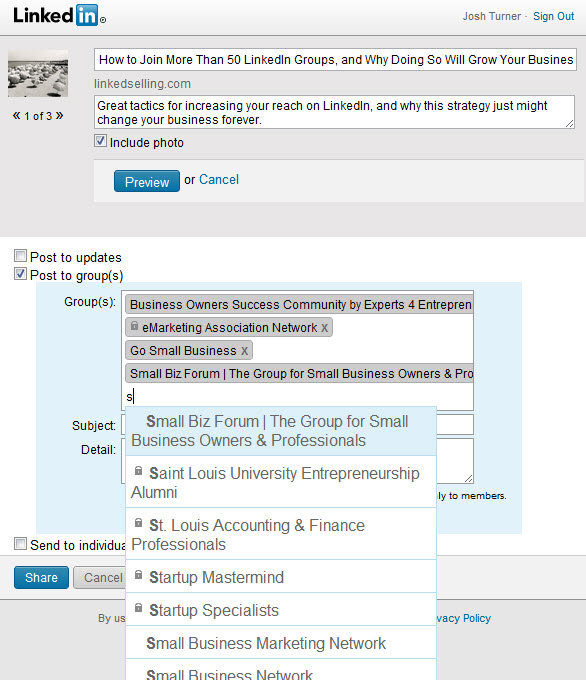
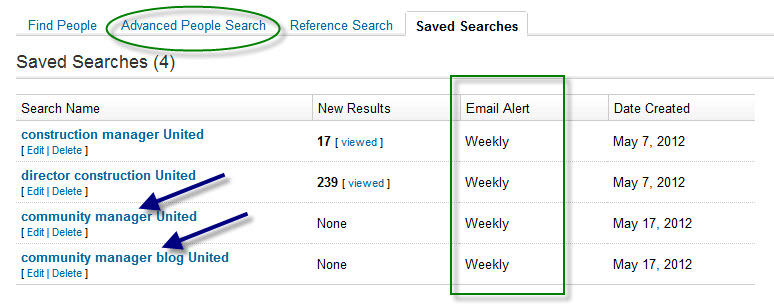
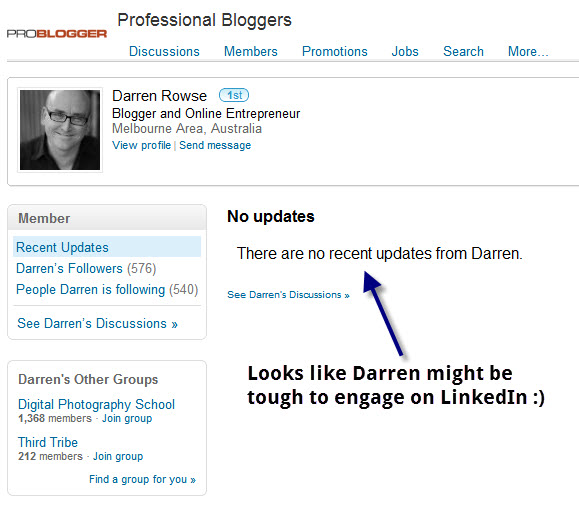
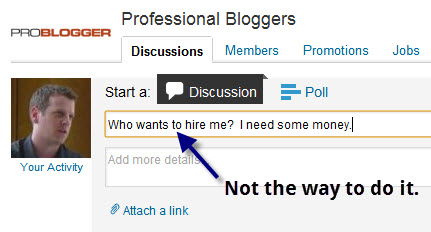

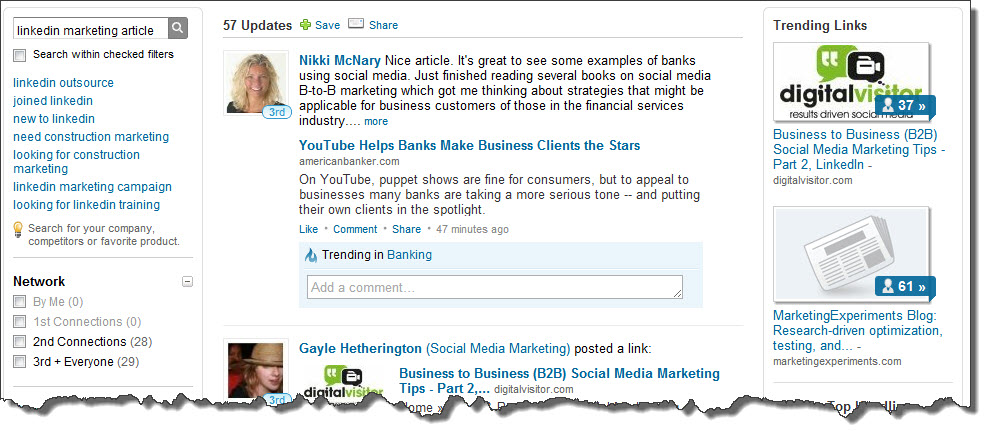

Комментариев нет:
Отправить комментарий